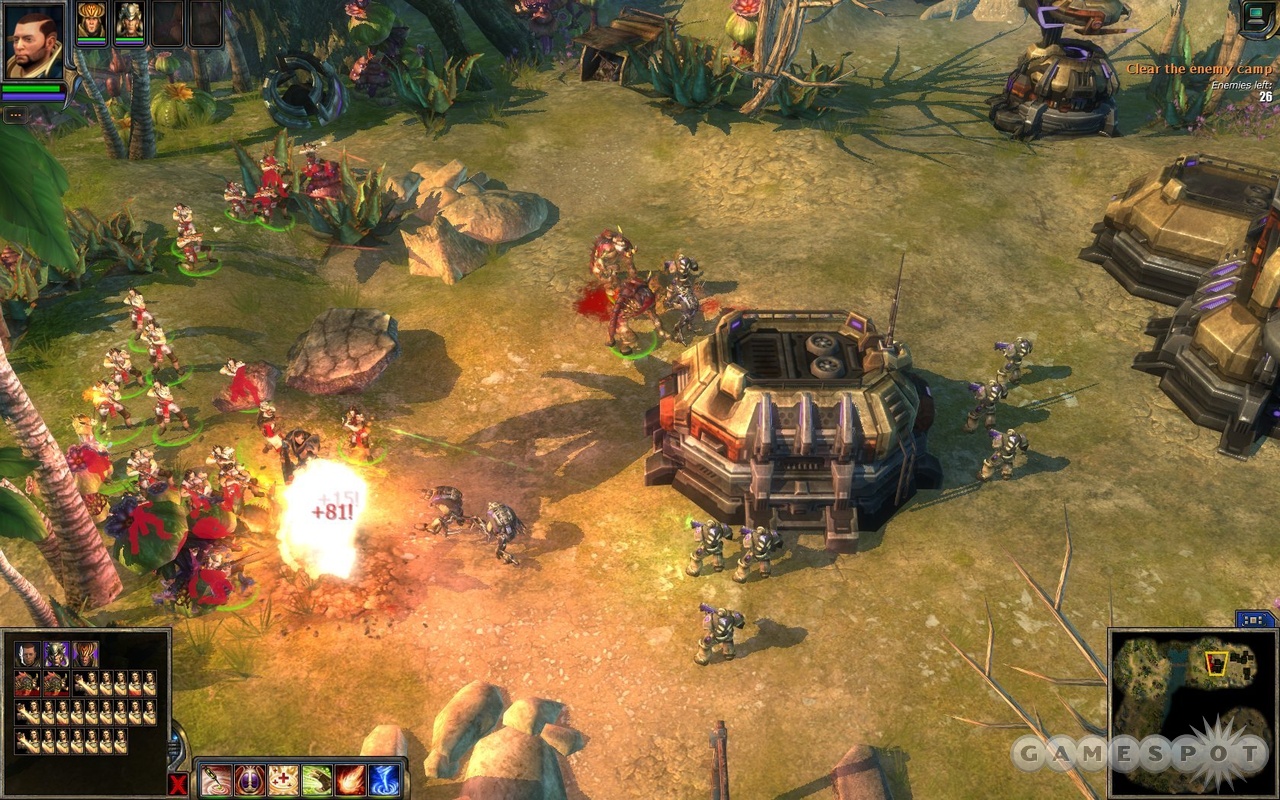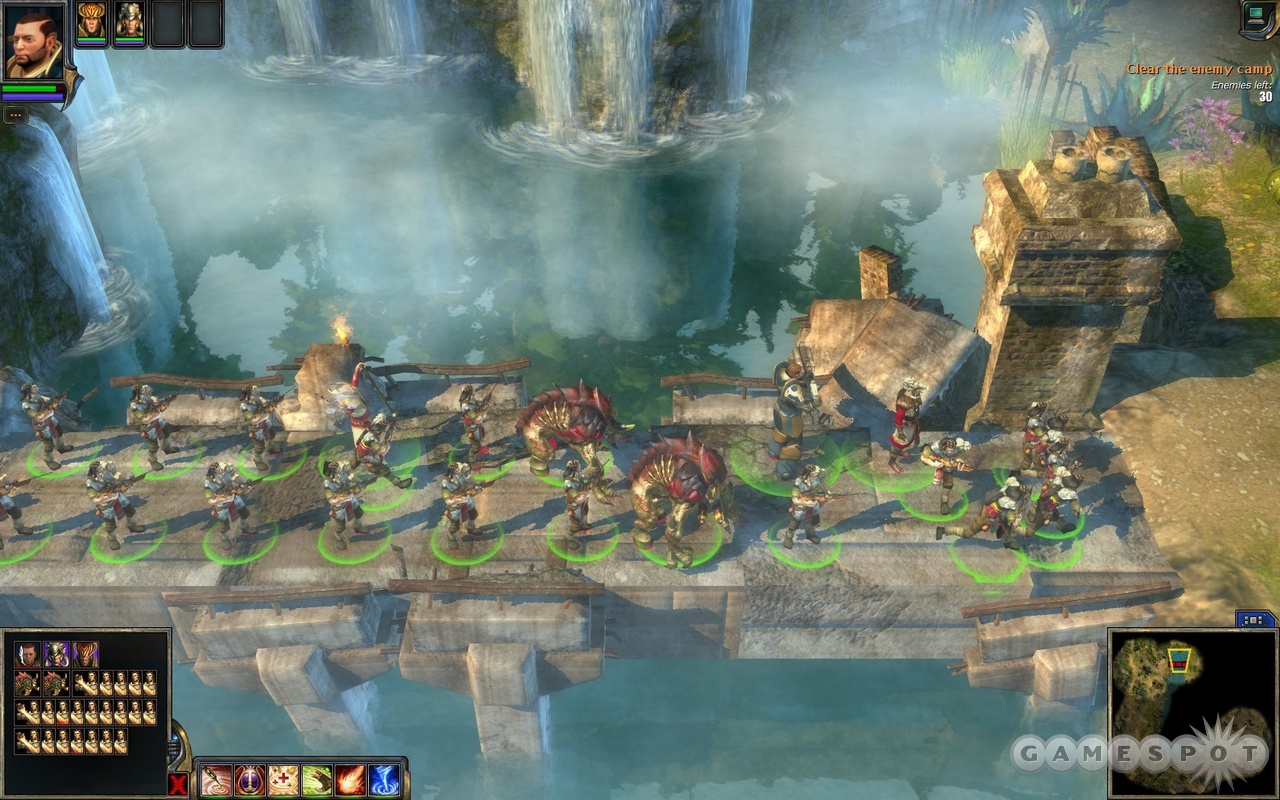WorldShift is an intriguing real-time strategy experiment, with a weird far-future story and three complementary races. It also has a wide range of solo, co-op, and Deathmatch modes of play, which means that it comes with plenty under the hood. Unfortunately, the gameplay itself is mired in the past. Although the multiplayer games have been intricately designed with a lot of strategic depth and many elements borrowed from massively multiplayer online games, much of this has been wasted on a boring point-and-click RTS that seems to have traveled through time from 1997. This problem, along with a range of serious single-player bugs, make the game look better on paper than it is in reality.

Worldshift's storyline, backdrop, and three factions are almost surreal. The time is the far future and the place is Earth long after an asteroid called Shard Zero went all 2012 to create a plague that destroyed and reshaped the entire planet. Everything has changed so much that the game might as well be taking place on an alien world. Flora and fauna consist of extraterrestrial additions like the sort of giant exotic plants that decorated the strange new worlds in old Star Trek episodes. Huge mushrooms can be found all over the place in some maps, and many are big enough to house hundreds of Smurfs, along with sinister-looking refugees from the Little Shop of Horrors. Overall, the look of the game is odd and effective, succeeding in transporting you to a colorful take on the future even while the repetitive, generic RTS order acknowledgements and corny militaristic music often beam you right back home.
Modes of play have obviously been built around multiplayer. You need to log in online whenever you start the game, whether you are entering the single-player campaign, playing cooperative missions, or taking on all comers in Deathmatch modes that range from mano-a-mano games to three-versus-three team contests. Finding an online match isn't particularly easy, though. Few seem to be playing either Deathmatch or co-op, although if you stick around for an hour or so, you can likely find a game. It's something of a shame that more people aren't playing online, too, because it features some really good ideas taken from MMOGs like World of Warcraft and multiplayer role-playing games like Diablo. Co-op maps let you team up with two buddies to scrap your way through levels, taking on computer-controlled mobs and bosses with big loot. The one drawback is that games often suffer from noticeable lag.
The three sci-fi/fantasy mash-up factions featured here have also been designed extremely well for multiplayer matchups. Humans come from five big cities that survived the cataclysm, employing battle robots and armored troops. Tribes consist of mutated humans living in the wild that use fantasy-standard weapons and magic. Here, you deal with shamans, spear-throwing heathens, and the like. And the Cult is an alien civilization that features units with shape-changing abilities and futuristic hardware. This trio fits together very well because each comes with pluses and minuses that you need to deal with in multiplayer matches. They also have a variety of troop types that use very similar melee and ranged attacks. The rock-paper-scissors formula is solid here. Factions also have unique looks, so you can always tell who's who at a glance. There isn't a huge range of units available to each side, although there are enough to keep things interesting and force you to rely on tactical planning during matches.
Yet despite all the great multiplayer trappings, the hybrid sci-fi/fantasy storyline, and the superb unit matching among factions, gameplay is rudimentary. If not for the modern 3D graphics, you might think that the game had originally been released a decade ago. Focus is mainly on combat strategizing and action. Additionally, you'll do some very limited base-building, collect a mineral resource known as xenolite, and order up troops from a command HQ in multiplayer. But even though this battle-first philosophy is front and center all the way, there is no way to give special orders, set up formations, or guide your troops in any detailed fashion. A little depth is added with hero-like officers and other units that have special abilities like casting spells, launching missile barrages, healing themselves and others, and so forth. Skill trees allow you to configure and boost these talents, and items awarded at the end of solo levels and in multiplayer can be used to buff specific units. But you can't lean on them too much. Units with the best special traits are expensive, and the power stat that enables you to use them (mana, essentially) drains fast and can take an eternity to regenerate. This can be a real problem at times, as you're often fighting with small groups of units and can wind up in trouble if you're stuck waiting around for the power needed to fire off special attacks. So you often seem better off using loads of cheap grunt units with single ranged or melee attacks instead. This leaves you spending a lot of time simply band-selecting and right-clicking on targets to start shooting. In the end, you feel sort of hamstrung; there is a lot of strategic depth here, but the limited controls mean that you can't always get at it.

The campaign also seems like something of an afterthought, with a plot that skips around like a stone over water. You're just dropped into the middle of a story about a prophecy and some human prince or whatever dealing with treason. It feels like you're expected to know what's going on, which leads to some head-spinning moments. Many levels are unbalanced. You'll storm through a level and then get stuck for an hour in a battle with a virtually invincible pack of goons. Sneaking is the only way to get past hordes of enemies in some areas, yet the game often doesn't inform you of this fact. Because you can occasionally outrun enemies to the level exit, too, this leads to a lot of trial and error. Bugs are another major concern during the campaign. Hard lockups occasionally force system restarts. Malfunctioning level checkpoints are even more aggravating because they don't always save your progress, forcing you to start a level from the beginning after being killed. Since there is no way to save manually, this makes the campaign awfully tough to play after you reach the midway point when levels start to get long and tough. Failure can also come quickly in a campaign mission because the death of a hero unit is an instant fail. All it takes is one enemy to hone in on a weak officer like the typical spellcaster to end your mission in a few moments.
WorldShift is a smooth, mostly well-executed game with some compelling multiplayer concepts, but it sticks to a familiar formula for the most part. The strange and distinctive races, bizarre visual take on a far-future Earth, and excellent faction balance certainly give it a fresh feel in the first couple of days of play, though. For many players, that will be enough, especially if you're a multiplayer gamer who couldn't care less about the snoozy solo campaign. Still, there is no denying that the action can grow somewhat repetitive for RTS veterans after the initial thrill fades, leaving you with a game that isn't quite all that it could be.